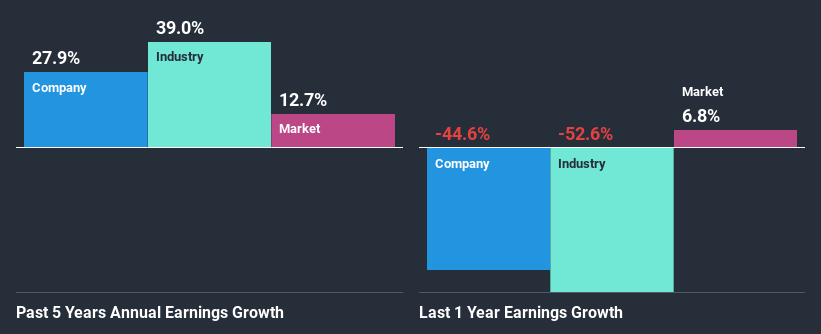Pembina Pipeline Corporation's (TSE:PPL) Stock Going Strong But Fundamentals Look Weak: What Implications Could This Have On The Stock?
Most readers would already be aware that Pembina Pipeline's (TSE:PPL) stock increased significantly by 17% over the past three months. However, in this article, we decided to focus on its weak fundamentals, as long-term financial performance of a business is what ultimatley dictates market outcomes. Specifically, we decided to study Pembina Pipeline's ROE in this article.
Return on equity or ROE is an important factor to be considered by a shareholder because it tells them how effectively their capital is being reinvested. In simpler terms, it measures the profitability of a company in relation to shareholder's equity.
Check out our latest analysis for Pembina Pipeline
How Is ROE Calculated?
Return on equity can be calculated by using the formula:
Return on Equity = Net Profit (from continuing operations) ÷ Shareholders' Equity
So, based on the above formula, the ROE for Pembina Pipeline is:
6.1% = CA$1.0b ÷ CA$17b (Based on the trailing twelve months to September 2020).
The 'return' refers to a company's earnings over the last year. So, this means that for every CA$1 of its shareholder's investments, the company generates a profit of CA$0.06.
What Has ROE Got To Do With Earnings Growth?
We have already established that ROE serves as an efficient profit-generating gauge for a company's future earnings. We now need to evaluate how much profit the company reinvests or "retains" for future growth which then gives us an idea about the growth potential of the company. Generally speaking, other things being equal, firms with a high return on equity and profit retention, have a higher growth rate than firms that don’t share these attributes.
Pembina Pipeline's Earnings Growth And 6.1% ROE
On the face of it, Pembina Pipeline's ROE is not much to talk about. A quick further study shows that the company's ROE doesn't compare favorably to the industry average of 8.1% either. In spite of this, Pembina Pipeline was able to grow its net income considerably, at a rate of 28% in the last five years. Therefore, there could be other reasons behind this growth. For instance, the company has a low payout ratio or is being managed efficiently.
We then compared Pembina Pipeline's net income growth with the industry and found that the company's growth figure is lower than the average industry growth rate of 39% in the same period, which is a bit concerning.
Earnings growth is an important metric to consider when valuing a stock. What investors need to determine next is if the expected earnings growth, or the lack of it, is already built into the share price. This then helps them determine if the stock is placed for a bright or bleak future. What is PPL worth today? The intrinsic value infographic in our free research report helps visualize whether PPL is currently mispriced by the market.
Is Pembina Pipeline Efficiently Re-investing Its Profits?
The high three-year median payout ratio of 100% (implying that it keeps only -0.5% of profits) for Pembina Pipeline suggests that the company's growth wasn't really hampered despite it returning most of the earnings to its shareholders.
Besides, Pembina Pipeline has been paying dividends for at least ten years or more. This shows that the company is committed to sharing profits with its shareholders. Upon studying the latest analysts' consensus data, we found that the company is expected to keep paying out approximately 110% of its profits over the next three years. Regardless, the future ROE for Pembina Pipeline is predicted to rise to 9.3% despite there being not much change expected in its payout ratio.
Conclusion
In total, we would have a hard think before deciding on any investment action concerning Pembina Pipeline. While the company has posted decent earnings growth, the company is retaining little to no profits and is reinvesting those profits at a low rate of return. This makes us doubtful if that growth could continue, especially if by any chance the business is faced with any sort of risk. That being so, a study of the latest analyst forecasts show that the company is expected to see a slowdown in its future earnings growth. Are these analysts expectations based on the broad expectations for the industry, or on the company's fundamentals? Click here to be taken to our analyst's forecasts page for the company.
This article by Simply Wall St is general in nature. It does not constitute a recommendation to buy or sell any stock, and does not take account of your objectives, or your financial situation. We aim to bring you long-term focused analysis driven by fundamental data. Note that our analysis may not factor in the latest price-sensitive company announcements or qualitative material. Simply Wall St has no position in any stocks mentioned.
Have feedback on this article? Concerned about the content? Get in touch with us directly. Alternatively, email editorial-team (at) simplywallst.com.

